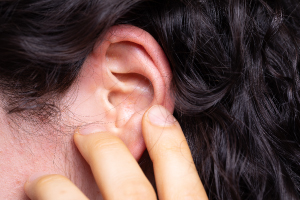

Pain and injuries are common issues and can often prove to be a hindrance in leading a quality life. However, there are countermeasures like osteopathy that can help you find a suitable solution for these issues.
But what is osteopathy? It is a type of therapy that aims to treat your health issues without using any drugs or surgery. Typically, osteopathy includes ‘hands-on’ techniques like stretching, resistance, and gentle pressure. These techniques are called Osteopathic Manipulative Medicine (OMM).
So, read on to learn about the method, benefits, disadvantages, and risk factors associated with this treatment.
How is Osteopathy Conducted?
The right osteopathy treatment can help you recover from conditions like arthritis, back pain, knee pain, headaches, elbow pain, and more. For this, you need to attend dedicated sessions and in those sessions, you will go through the following process:
- First, the osteopath will ask about your symptoms and general health condition. Also, before starting the physical examination, they will ask if you’re receiving any other medical treatment.
- In the next step, the osteopath will find the areas of your body having weakness, restriction, or tenderness. Specifically, they will examine the spine, muscles, and joints. Such examinations are done manually.
- You may have to remove some clothing to let the osteopath examine the affected areas. At this time, they will ask you to perform some simple movements.
- These movements and your overall condition will help the professionals to conduct a primary diagnosis.
- However, in case of any critical issue, the expert can ask you to get an MRI or blood test. This will help them get a more in-depth understanding of the issue and then decide the course of treatment.
Having said that, some of the prevalent techniques of osteopathy treatment are:
- Massage: It helps relax and release your muscles.
- Articulation: This technique supports your joints in moving with their natural motion.
- Stretching Out Stiff Joints: Stretching helps reduce the stiffness of joints. It also increases the range of motion of the joint area.
- High-Velocity Thrusts: It enables a short and sharp movement of your spine. As a result, a clicking noise will be produced. The noise is similar to the cracking of the knuckles.
Benefits of Osteopathy
This treatment helps to fix a wide range of diseases. So, learn about the advantages of osteopathy:
1. Non-Invasive
The osteopathy treatment is non-invasive. That means you don’t need any surgery to opt for this treatment. Moreover, osteopathy techniques are usually painless. They improve muscle movement and enhance blood flow. So, it’s relaxing and comfortable. Thus, patients can undergo this treatment easily.
The process involves some manual procedures. It needs hands-on therapy and some tools. It fixes the musculoskeletal issues with some manual techniques. But, if you feel any pain or discomfort during osteopathy, you must inform the doctor immediately.
2. Treatment for Multiple Diseases
Osteopathy can treat several diseases like back pain, injuries, anxiety, menstrual pain, tennis elbow, asthma, digestive disorder, and temporomandibular disorder. So, depending on your condition, consult your physician and understand whether osteopathy can help you fully recover from this position or if you need additional help.
3. No Medication
Osteopathy doesn’t require any medication. Thus, there is no risk of suffering from the side effects of drugs and their long-term effect on the body.
4. Strengthen Your Body
Regular osteopathy improves your health and provides a better life. It focuses on empowering the musculoskeletal system and prevents your body from further injury.
Disadvantages of Osteopathy
Apart from the benefits, osteopathy also has some disadvantages. These are as follows:
1. Limited Scope
Osteopathy can’t cure serious bone or muscular disorders, extreme injuries, and complicated issues.
2. Long Recovery Time
Osteopathy treatment does not provide the same result for every patient. Some people need multiple osteopathy treatments as a single treatment is not fruitful for them. Alternatively, others recovered after taking a single therapy.
Potential Dangers of Osteopathy
Furthermore, there are some risks in osteopathy. These are:
- Patients may feel stiffness within 24 to 48 hours after taking osteopathy.
- Older patients may suffer from uncommon side effects like numbness, rib fracture (for patients with osteoporosis), severe pain, and tingling.
- Also, people may be affected by more hazardous situations such as – nerve damage, limb pain, muscle weakness, bowel problems, and even stroke.
Conclusion
Osteopathy benefits the musculoskeletal framework of our body. It removes pain and overall posture. Also, doctors advise some dietary modifications and changes in workplace ergonomics like seating positions. All in all, osteopathy ensures that you recover from ailments in a more organic way and stay clear of the effects of medicinal drugs.




